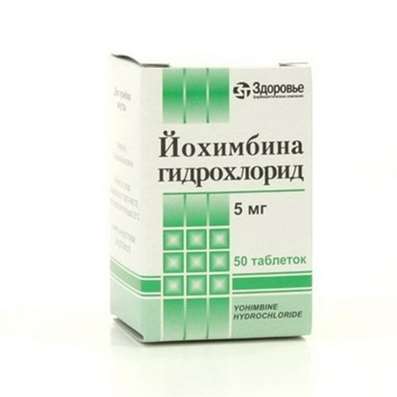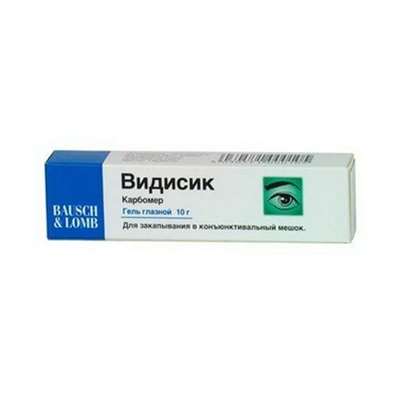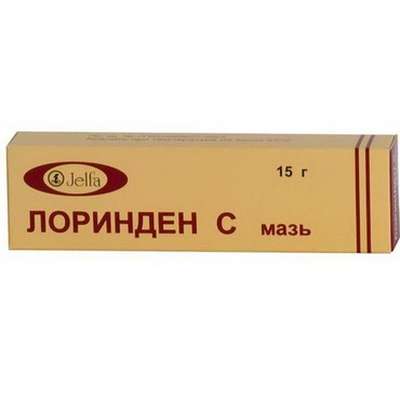Instruction for use: Neurodolon
I want this, give me price
Active substance Flupirtine
ATX code N02BG07 Flupirtine
Pharmacological groups
Other non-narcotic analgesics, including non-steroidal and other anti-inflammatory drugs
Nosological classification (ICD-10)
R52.0 Acute pain
Acute pain syndrome, Acute pain syndrome with osteoarthritis, Acute pain syndrome of traumatic origin, Severe pain of a neurogenic nature, Severe pain, Pain syndrome at delivery
Composition
Capsules 1 caps.
active substance:
flupirtine maleate 100 mg
auxiliary substances: calcium hydrophosphate dihydrate - 132 mg; starch corn pregelatinized corn - 62 mg; magnesium stearate - 3 mg; talcum - 3 mg
capsule hard gelatin ¹0 - 96 mg
body: dye "Sunset Sunset" yellow - 0.059 mg; titanium dioxide 1.18 mg; gelatin - 57.761 mg
lid: dye «Sunset sunset» yellow - 0.037 mg; titanium dioxide - 0.74 mg; gelatin - 36.223 mg
Description of dosage form
Hard gelatin capsules ¹0, lid and body of orange color.
The contents of the capsules are almost white powder with inclusions in the form of small pieces of compressed mass or compacted mass of almost white color, crumbling when pressed lightly.
pharmachologic effect
Pharmacological action - analgesic.
Pharmacodynamics
Flupirtine is a representative of selective Neuronal Potassium Channel Opener (SNEPCO) and refers to non-opioid analgesics of central action. Flupirtine activates G-protein-associated neural K + channels of internal rectification. The yield of K + ions causes stabilization of the resting potential and a decrease in the excitability of neuronal membranes. As a result, indirect inhibition of NMDA receptors (N-methyl-B-aspartate) occurs, since NMDA receptor blockade with Mg2 + ions persists until cell membrane depolarization occurs (indirect antagonistic action on NMDA receptors).
At therapeutically significant concentrations, flupirtine does not bind to alpha1, alpha2, 5HT1- (5-hydroxytryptophan), 5HT2-serotonin, opioid, central m-and n-cholinergic receptors.
Such a central action of flupirtine leads to the realization of three main effects.
Analgesic effect. Due to the selective opening of the potential-dependent K + channels of neurons with the concomitant release of ions, the K + rest potential of the neuron is stabilized. The neuron becomes less irritable.
The indirect antagonism of flupirtine against MNDA receptors protects neurons from the entry of Ca2 + ions. Thus, the sensitizing effect of increasing the intracellular concentration of Ca2 + ions is mitigated. Consequently, when the neuron is excited, inhibition of the transfer of ascending nociceptive impulses occurs.
Miorelaxing effect. The pharmacological effects described for the analgesic effect are functionally supported by increased absorption of Ca2 + ions by mitochondria, which occurs at therapeutically significant concentrations. The miorelaksiruyuschee effect arises as a result of concomitant inhibition of the transfer of impulses to motor neurons and the corresponding effects of interstitial neurons. Thus, this effect is manifested mainly in relation to local muscle spasms, and not the whole musculature as a whole.
The effect of chronification processes. Chronicification processes should be considered as the processes of neuronal conduction, due to the plasticity of the functions of neurons; by the induction of intracellular processes, the elasticity of neuronal functions creates the conditions for the implementation of mechanisms of the type of inflation, under which the response for each subsequent impulse increases. NMDA receptors (gene expression) are responsible for the launch of such changes. Indirect blockade of these receptors under the influence of flupirtine leads to suppression of these effects. Thus, unfavorable conditions are created for clinically significant chronic pain, and in the case of previous chronic pain, to erase pain memory by stabilizing the membrane potential, which leads to a decrease in pain sensitivity.
Pharmacokinetics
After ingestion flupirtine quickly and almost completely (90%) is absorbed into the digestive tract. Up to 75% of the dose is metabolized in the liver with the formation of metabolites M1 and M2. The active metabolite M1 (2-amino-3-acetamino-6- (4-fluoro) -benzylaminopyridine) is formed as a result of the hydrolysis of the urethane structure (the first reaction phase) and subsequent acetylation (reaction 2-stage) and provides an average of 25 % analgesic activity of flupirtine.
Another metabolite, M2, is not biologically active, is formed as a result of the oxidation reaction (1st phase) of p-fluorobenzyl followed by conjugation (2nd phase) of p-fluorobenzoic acid with glycine. Studies on which isoenzyme is predominantly involved in the oxidative pathway of degradation have not been carried out. It should be expected that flupirtine will have only a small capacity for interaction.
T1 / 2 flupirtine from the blood plasma is about 7 hours (10 hours for the main substance and metabolite M1), which is sufficient to provide an analgesic effect.
The concentration of flupirtine in the blood plasma is proportional to the dose.
In elderly people (over 65 years), compared with young patients, there is an increase in T1 / 2 (up to 14 hours with a single admission and up to 18.6 hours with admission for 12 days) and Cmax drug in blood plasma, respectively, 2 -2.5 times higher.
Mostly excreted by the kidneys (69%): 27% - unchanged, 28% - in the form of metabolite M1 (acetyl metabolite), 12% - in the form of metabolite M2 (fluorohypuric acid); 1/3 of the administered dose is excreted as metabolites of an unexplained structure. A small part of the dose is excreted from the body with bile and feces.
Indication of Neurodolon
Acute pain of mild and moderate severity in adults (treatment).
Contraindications
hypersensitivity to the active substance or any other component of the drug;
patients with a risk of developing hepatic encephalopathy and patients with cholestasis, since can develop encephalopathy or aggravate the course of already existing encephalopathy or ataxia;
patients with myasthenia gravis in connection with the muscle relaxant effect of flupirtine;
patients with concomitant liver disease or alcoholism;
simultaneous application of flupirtine with other drugs that can have hepatotoxic effects;
patients with newly healed or existing ringing in the ears, since these patients patients have a high risk of hepatic enzyme activity;
children's age till 18 years.
With caution: kidney failure; hypoalbuminemia; The elderly are older than 65 years.
pregnancy and lactation
There is insufficient data on the use of flupirtine in pregnancy. In experimental animal studies, flupirtin showed reproductive toxicity, but not teratogenicity.
The potential risk to humans is unknown. Neurodolon should not be used during pregnancy, except when the benefit to the mother exceeds the potential risk to the fetus.
According to the research, flupirtine penetrates into breast milk in a small amount. In this regard, Neurodolon can not be used during breastfeeding, except when there is an extreme need for taking the drug. If it is necessary to use Neurodolon during lactation, breastfeeding should be stopped.
Side effects
WHO classification of the incidence of side effects: very often - ≥1/10 appointments (≥10%); often from ≥1 / 100 to <1/10 of appointments (≥1 and <10%); infrequently - from ≥1 / 1000 to <1/100 of prescriptions (≥0.1 and <1%); rarely - from ≥1 / 10000 to <1/1000 appointments (≥0.01 and <0.1%); very rarely - <1/10000 prescriptions (<0.01%); frequency is unknown (can not be estimated based on available data).
From the hepatobiliary system: very often - an increase in the activity of hepatic transaminases; frequency unknown - hepatitis, hepatic insufficiency.
On the part of the immune system: infrequently - hypersensitivity to the drug, allergic reactions (in some cases accompanied by fever, skin rash, urticaria, skin itching).
From the side of metabolism: often - lack of appetite.
From the nervous system: often - sleep disturbance, depression, anxiety / nervousness, dizziness, tremor, headache; infrequently - confused consciousness.
From the side of the organ of vision: infrequently - impaired vision.
From the gastrointestinal tract: often - dyspepsia, nausea, vomiting, pain in the stomach, constipation, abdominal pain, dryness of the oral mucosa, flatulence, diarrhea.
From the skin and subcutaneous tissues: often - sweating.
Other: very often fatigue / weakness (in 15% of patients), especially at the beginning of treatment.
Side effects mainly depend on the dose of the drug (with the exception of allergic reactions). In many cases, they disappear by themselves as they take place or after the end of treatment.
Interaction
Strengthens the effect of alcohol, sedatives and muscle relaxants.
Due to the fact that flupirtine has a high degree of binding to proteins, it can change the degree of binding to proteins of other concomitantly used drugs. As a result of the in vitro study of the interaction of flupirtine with warfarin, acetylsalicylic acid, diazepam, benzylpenicillin, digoxin, glibenclamide, propranolol, clonidine, it has been found that only verapamil and diazepam are displaced by flupirtine from binding to plasma proteins, which can lead to an increase in their activity.
With the simultaneous use of flupirtine and indirect anticoagulants - coumarin derivatives - it is recommended to regularly monitor PV in order to timely correct the dose of indirect anticoagulants. There are no data on the interaction with other anticoagulant or antiplatelet agents (including acetylsalicylic acid).
With the simultaneous use of flupirtine with drugs that are metabolized in the liver, regular monitoring of hepatic enzyme activity is required. Combined use of flupirtine and drugs containing paracetamol and carbamazepine should be avoided.
Dosing and Administration
Inside, without chewing the capsule and washing down with a sufficient amount of liquid (preferably water). If possible, the drug is taken while in an upright position.
In exceptional cases, the capsule of the drug Neurodolon can be opened and taken inside / inserted through the probe only the contents of the capsule, when ingested inside the contents of the capsule, it is recommended to neutralize its bitter taste by eating food, for example a banana.
Apply 100 mg (1 caps.) 3-4 times a day with equal intervals between doses. At the expressed pains - on 200 mg (2 caps.) 3 times a day. The maximum daily dose is 600 mg / day (6 caps.).
Doses are selected depending on the intensity of pain and individual tolerance of the drug. Use the lowest effective dose for the shortest possible time. Duration of treatment should not exceed 2 weeks.
Patients older than 65 years: at the beginning of treatment - 100 mg (1 caps.) 2 times a day in the morning and in the evening. The dose can be increased to 300 mg, depending on the intensity of pain and the tolerability of the drug.
In patients with renal insufficiency, the concentration of creatinine in the blood plasma should be monitored. The maximum daily dose should not exceed 300 mg / day (3 caps.).
In patients with mild and moderate renal failure, dose adjustment is not required.
In patients with severe renal failure or with hypoalbuminemia, the maximum daily dose should not exceed 300 mg / day (3 caps.). If it is necessary to use the drug in a higher dose, patients should be under the supervision of a doctor.
Overdose
Symptoms: (after taking flupirtine in a dose of 5 g) nausea, tachycardia, prostration, tearfulness, stupor, confusion, stunned consciousness, dryness of the oral mucosa. In case of overdose or signs of intoxication, one should bear in mind the possibility of occurrence of disorders from the central nervous system, as well as the manifestation of hepatotoxicity by the type of enhancement of metabolic disorders in the liver.
There are reports of single cases of overdose with suicidal intentions.
Treatment: induction of vomiting or use of forced diuresis, the appointment of activated carbon and the introduction of electrolytes. In this case, the state of health was restored within 6-12 hours. There were no reports of life-threatening conditions. Conduct symptomatic treatment. The specific antidote is unknown.
special instructions
The drug Neurodolon should be used if treatment with other analgesics (for example, NSAIDs or opioids) is contraindicated.
In patients with impaired renal function, the concentration of creatinine in the blood plasma should be monitored. In patients older than 65 years or with severe signs of renal failure or hypoalbuminemia, dose adjustment is necessary.
During treatment with the drug Neurodolon, once a week, it is necessary to monitor the liver function status. when flupirtin is used, an increase in hepatic transaminase activity, hepatitis and hepatic insufficiency may occur.
If the results of the liver test deviate from the norm or if there are clinical symptoms that indicate liver damage, then stop using the drug Neurodolon.
Patients should be warned that during treatment with Neurodolon, attention should be paid to any symptoms of liver damage (eg, lack of appetite, nausea, vomiting, stomach pain, fatigue, dark urine, jaundice, pruritus). If these symptoms occur, stop taking Neurodolon and consult a doctor urgently.
In the treatment of flupirtin, false positive reactions of the test with diagnostic strips for bilirubin, urobilinogen and protein in the urine are possible. A similar reaction is possible with a quantitative determination of the concentration of bilirubin in the blood plasma.
When applying the drug in high doses, in some cases, the color of urine can be marked green, which is not a clinical sign of any pathology.
Impact on the ability to manage vehicles and mechanisms. Given that the drug Neurodolon can weaken attention and slow the reaction rate, during treatment it is recommended to refrain from managing transportation and practicing potentially hazardous activities. It is especially important to remember this when using alcohol at the same time.
Form of issue
Capsules, 100 mg. For 10 and 15 caps. in a planar cell box made of PVC film and foil of aluminum printed lacquered. By 1, 3, 5 contour cell packs of 10 caps. or 1, 2, 3, 4 contour cell packs of 15 caps. put in a pack of cardboard.
Conditions of leave from pharmacies
On prescription.
storage Conditions
In a dry, the dark place at a temperature of no higher than 25 ° C.
Keep out of the reach of children.
Shelf life
2 years.
Do not use after the expiry date printed on the package.

 Cart
Cart





